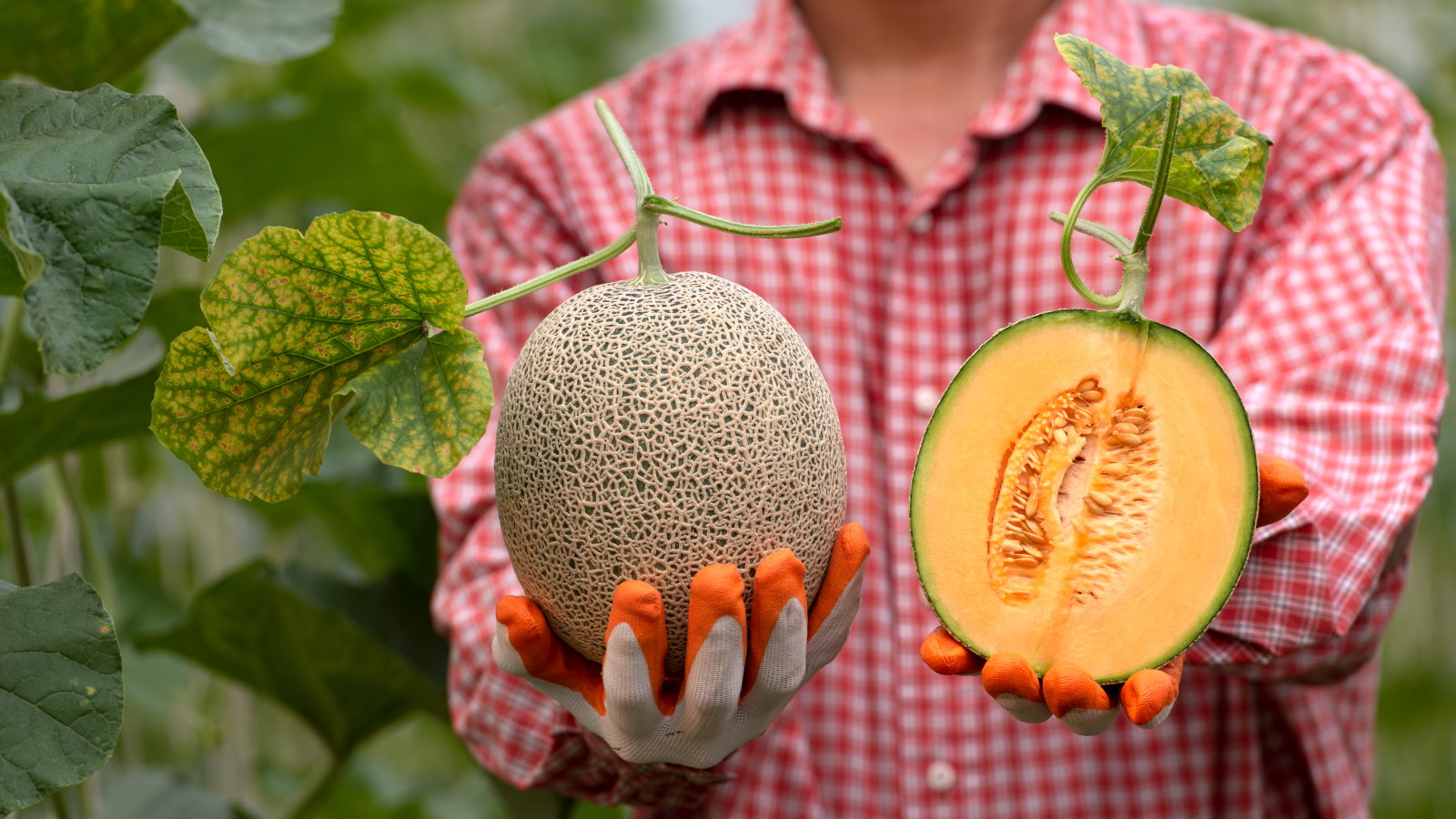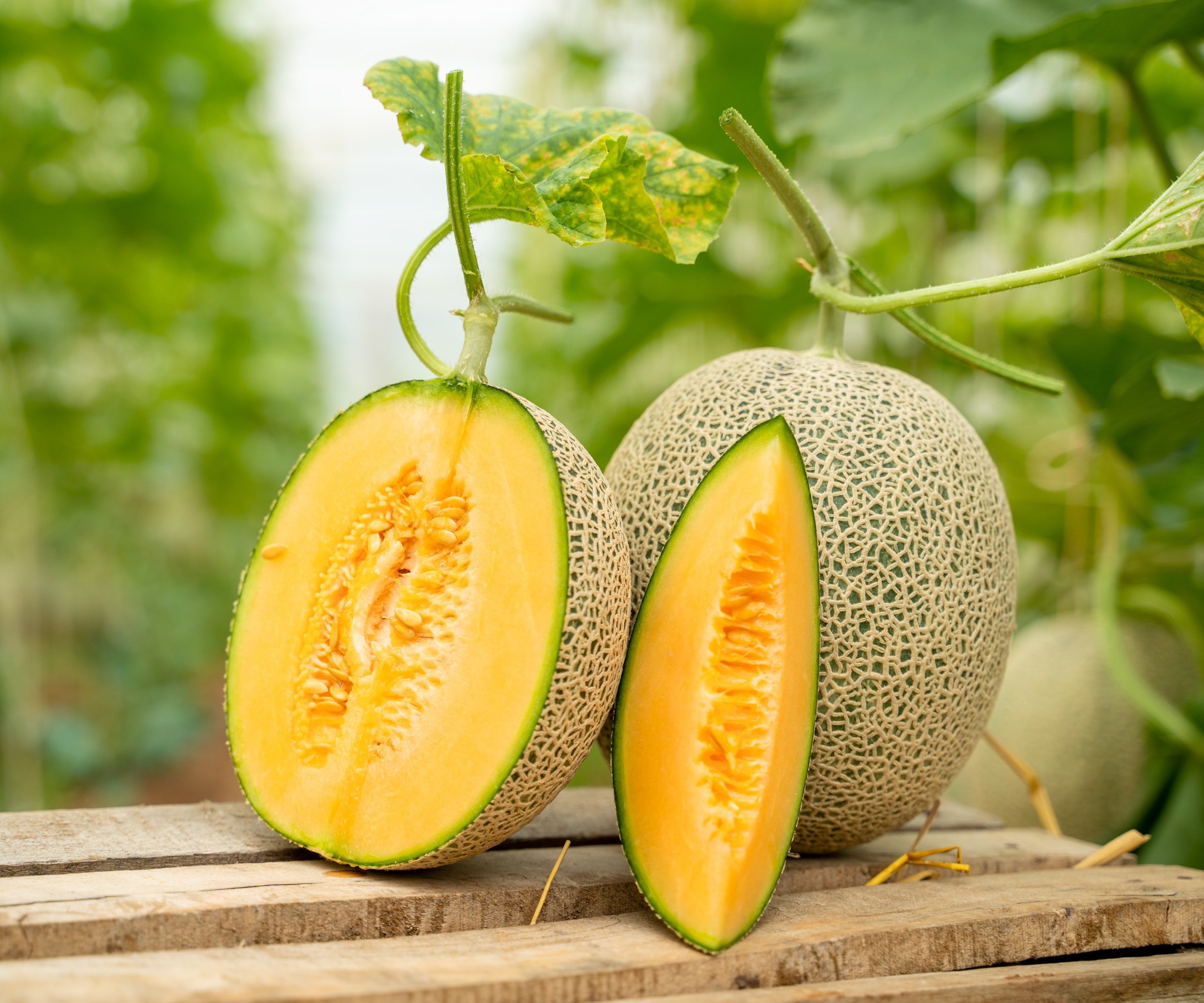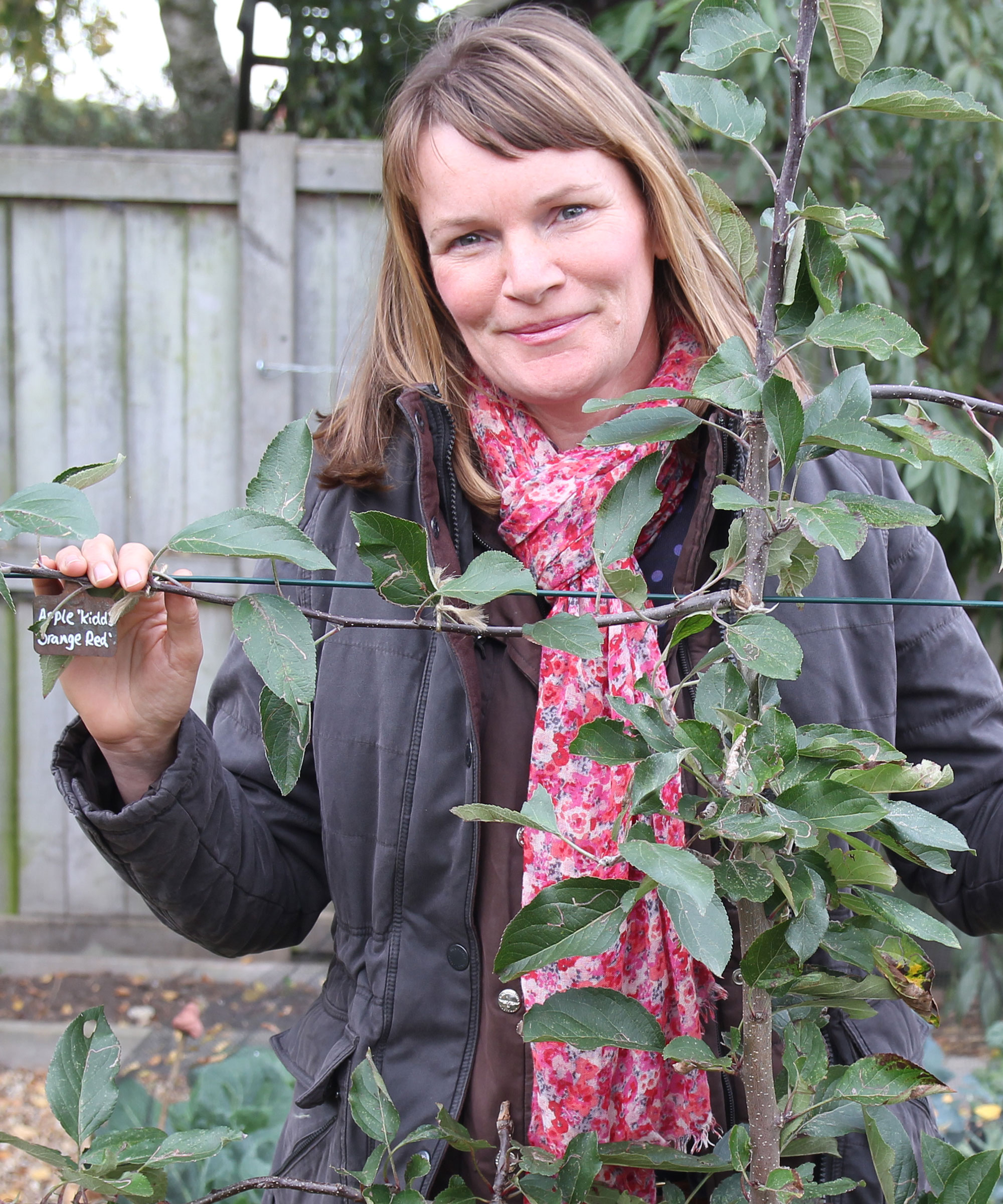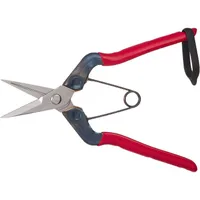When to pick cantaloupes – discover the tell-tale signs of a perfectly ripe cantaloupe
A ripe cantaloupe is a treat for your nose with its sweet and delectable scent


Cantaloupes are heat-loving crops that are easy to grow and produce multiple sweet and luscious fruits throughout the summer. Picking them at the right moment is a skill to master, as harvesting too soon or too late can mean disappointing fruits compared to a perfectly ripe cantaloupe.
If you are looking to learn how to grow cantaloupe then you may be surprised how quickly the plants grow their fruits. Picking cantaloupes is a simple process and, once you have learned the tell-tale signs of ripe fruit, you can enjoy refreshing and delicious homegrown melons straight from the vine.
Cantaloupes are fragrant fruits with juicy flesh and these traits come to the fore as you use touch and smell to tell when they are ripe to pick from the vine. A ripe cantaloupe ready to pick from the vine will emit a sweet smell, have a golden color, and be firm but with soft skin.

Cantaloupes are fast-growing and simple to harvest
When to harvest a cantaloupe
The time it takes for cantaloupes to go from sowing to harvesting is impressively quick, considering the size of fruit that the plant produces. The exact days to maturity are all dependent on different conditions, but it can take as little as two to three months for the fruit to be ready to crop from being planted.
The variety, growing conditions, and climate will all make a difference, but it can mean that cantaloupes have a long potential season. They can be ripe and ready to harvest from June all the way through into early fall.
JD Alewine has grown cantaloupes since childhood and runs the website Them Bites. He says: ‘On average, it takes approximately 70 to 90 days for a cantaloupe plant to mature and produce ripe fruits. However, certain early-maturing varieties may be ready for harvest in as little as 60 days, while others may require more than 90 days.’
To find out a guide to the exact number of days your chosen variety should take to mature, check the seed packet or online description. This information will be helpful when planning a greenhouse or kitchen garden, to give you a good idea of when to expect to be adding harvesting cantaloupes to your gardening calendar for the year.
Design expertise in your inbox – from inspiring decorating ideas and beautiful celebrity homes to practical gardening advice and shopping round-ups.
Buy cantaloupe seeds from Burpee

JD Alewine is an experienced gardener and cook. He started Them Bites with his wife Maddy as a place to share recipes and highlight places to eat, drink, and have fun in their home of Asheville in Western NC.
When is a cantaloupe ready to pick?

Cantaloupes can be ready in as little as 60 days
Timing is key when it comes to picking cantaloupe. If you harvest them too early they won’t be as sweet as you desire as the sugars won't have fully developed, and they can be hard. On the other hand, pick them too late and they can be soft and watery.
That makes it important to pay close attention to your cantaloupe, making sure to check them regularly and be able to identify the tell-tale signs that the fruit is ready to pick. You can help get that timing nailed down and harvest your cantaloupe at the perfect moment by using the indicators of smell, color, and texture.
Lucy Chamberlain , the fruit growing expert for Homes & Gardens, says that a ripe cantaloupe ‘is a treat not just for your taste buds but also for your nose’.
- Scent: The smell the cantaloupe gives off is a sign it is picking time.‘The fruits take a tantalisingly long time to ripen, but as they mature the skin softens and, for many varieties, a delicious scent emits from the fruit,’ says Lucy.
- Color: When the cantaloupe has ripened and it is time to pick the fruit, the color of the rind changes. It will go from green to a more golden or yellow color. Along with the color, the texture should also be slightly soft to the touch - too soft and it might have been on the vine too long.
- Texture: As the skin softens, the texture of the fruit should be slightly soft when pressed. Lucy adds: ‘This is a good way to tell if a cantaloupe melon is ready – along with looking for small cracks appearing on the top of the fruit, where it attaches to the stem.’
- Stem: Any crack in the stem indicates it is time to be removed from the vine – a perfectly-ripe cantaloupe should easily detach itself – however if it has fallen off itself then that will mean an over-ripe cantaloupe.
If you think a cantaloupe is ready to pick, then give it a feel, a close look, and a sniff. It is the right color, firm, and emits a sweet smell then it is time to remove the fruit from the vine.

Lucy was a Horticultural Advisor at RHS Wisley and has been Head Gardener on a 100-acre estate in England for many years, but writes regularly for titles such as The Garden, Gardeners’ World, The Guardian and Amateur Gardening. She’s also the author of RHS Step by Step Veg Patch, available from Amazon, which covers 50 types of fruit and veg.
How to pick cantaloupe

The feel of a cantaloupe can show how ripe it is
The process of harvesting cantaloupe is very simple and it is not even always necessary to use any tools. A properly ripe melon should be able to be gently pulled from the vine, and it should come away easily. If required, use a sharp knife or a pair of clean and sharp pruning shears to cut away the cantaloupe and leave a short piece of stem attached.
Never pull the fruit hard, or aggressively twist it, to get it to come away from the vine. If a cantaloupe needs that much persuasion then it is not ripe enough to pick, and being heavy-handed risks damaging the vine or fruits around it. Be gentle when handling the fruit as they can be easily bruised or damaged.
Lucy Chamberlain advises that if your melons are climbing and you cannot check the cantaloupes daily then it is best to ‘sit each fruit in a well-supported net’ to provide extra support for swelling fruits.
Seb Lee, who practices small-scale suburban self sufficiency in the north of the UK, remembers his grandad growing cantaloupes. The fruits he grew were suspended in bags and they came in handy to offer protection when picking the cantaloupe.
‘He would grow his cantaloupes in bags hanging on his wires inside his greenhouse and he used to tell me he could only pick them when they turned yellow and he could see the yellow through the clear plastic bags,’ says Seb.
‘When he harvested them, he would take hold of the bags by the handles and then cut the vine with his little pocket knife so the cantaloupe fell into the bag.’

Seb Lee has been practising small-scale suburban self sufficiency for over a decade. He grows food as well as keeping chickens and generating his own power. He runs an online publication and community at Bournebright to help others become more self sufficient.
Stainless steel Harvesting Scissors | Available at Amazon
These types of harvesting scissors can be ideal if you need to snip cantaloupe from the vine.
FAQs
What happens if you pick cantaloupe early?
You may be wondering, will a cantaloupe ripen off the vine? The answer is that cantaloupes that are picked too early will not ripen or continue to sweeten once unattached from the vine.
However, it is possible to develop the texture and color of a cantaloupe that has not quite ripened by placing it into a brown paper bag. Closing the bag traps ethylene gas and helps the fruit to ripen. Adding a ripe banana or apple to the bag can speed up the process. This will only work on a slightly unripe cantaloupe.
How long will cantaloupe last after picking?
If you are considering how to store cantaloupe after picking them, then the best option depends on how soon you want to start eating it. After a cantaloupe has been picked from the vine it can be stored whole and uncut for around five to seven days at room temperature. Once the cantaloupe has been cut, it has a lifespan of three to four days in the refrigerator. It can also be cut and stored in the freezer for 10-12 months.
You do need warmth for successful melons, which is why they tend to be grown in warmer US hardiness zones or in backyard greenhouses. They need constant temperatures of 70-75°F during the day and 60-65°F during the night for a good few months to deliver optimum growth. If you can provide these temperatures, then cantaloupes can definitely be a rewarding crop to grow and pick.

Drew has worked as a writer since 2008 and was also a professional gardener for many years. As a trained horticulturist, he worked in prestigious historic gardens, including Hanbury Hall and the world-famous Hidcote Manor Garden. He also spent time as a specialist kitchen gardener at Soho Farmhouse and Netherby Hall, where he grew vegetables, fruit, herbs, and cut flowers for restaurants. Drew has written for numerous print and online publications and is an allotment holder and garden blogger. He is shortlisted for the Digital Gardening Writer of the Year at the 2025 Garden Media Guild Awards.
